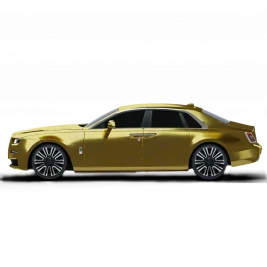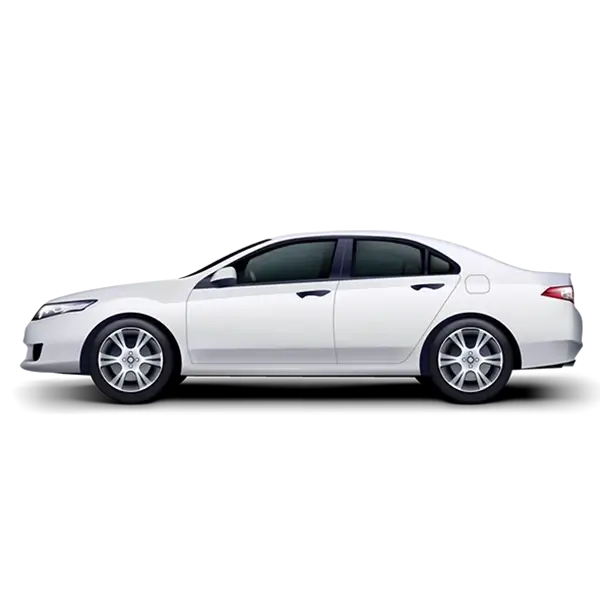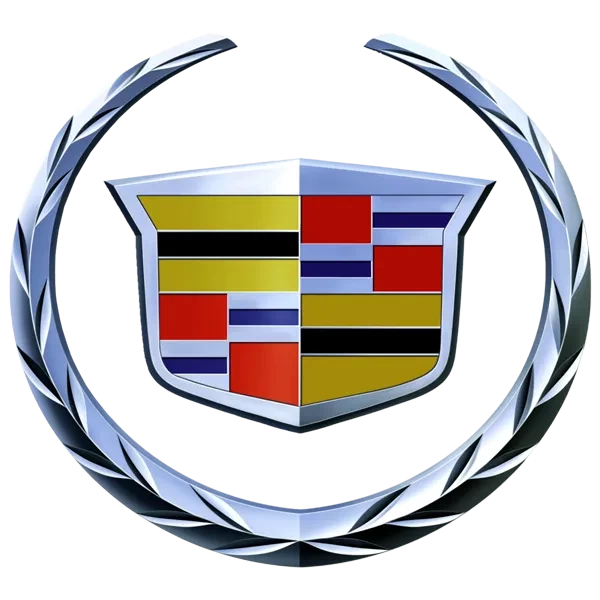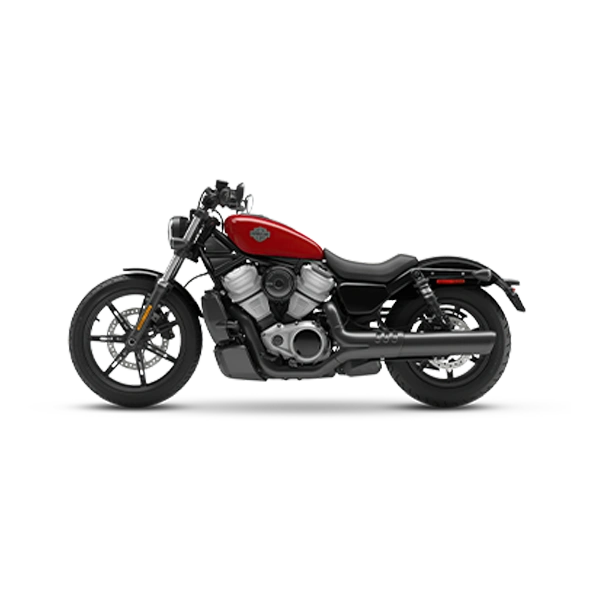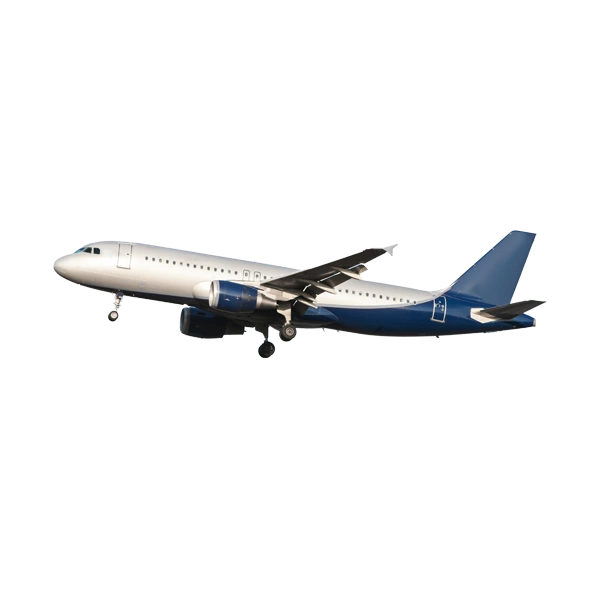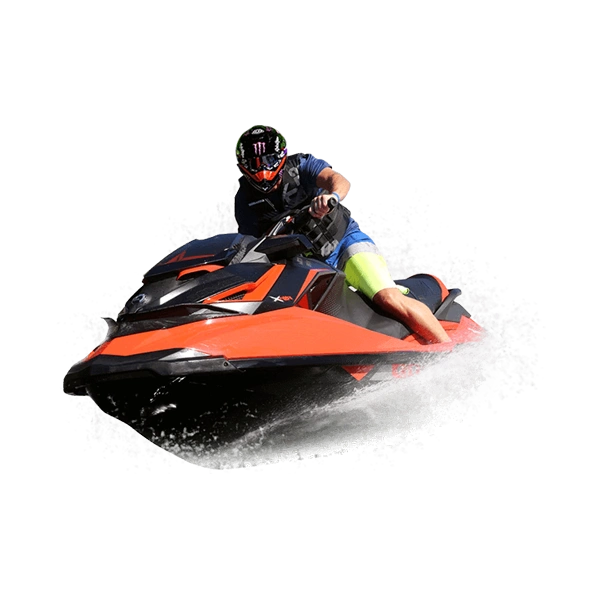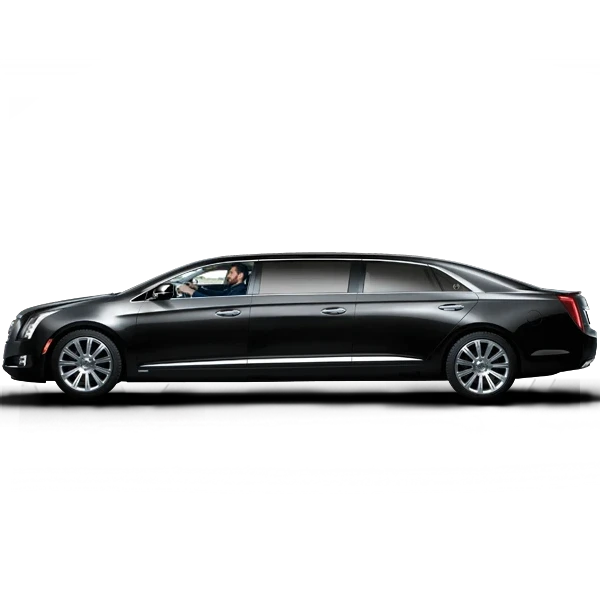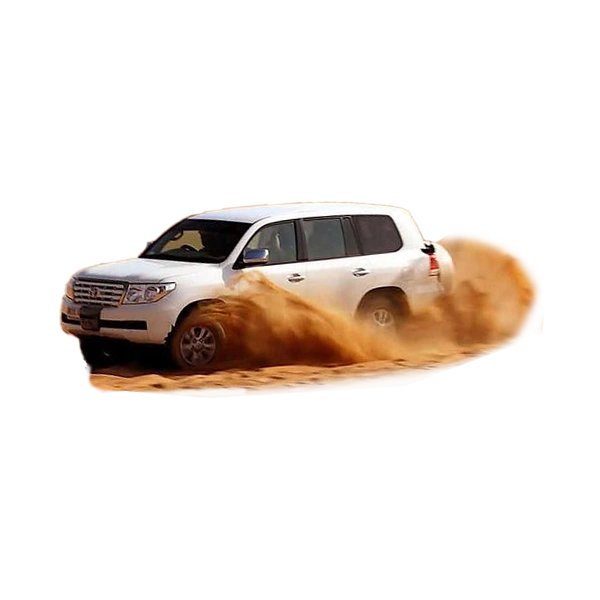Car Safety Features That Are Saving Lives on Roads
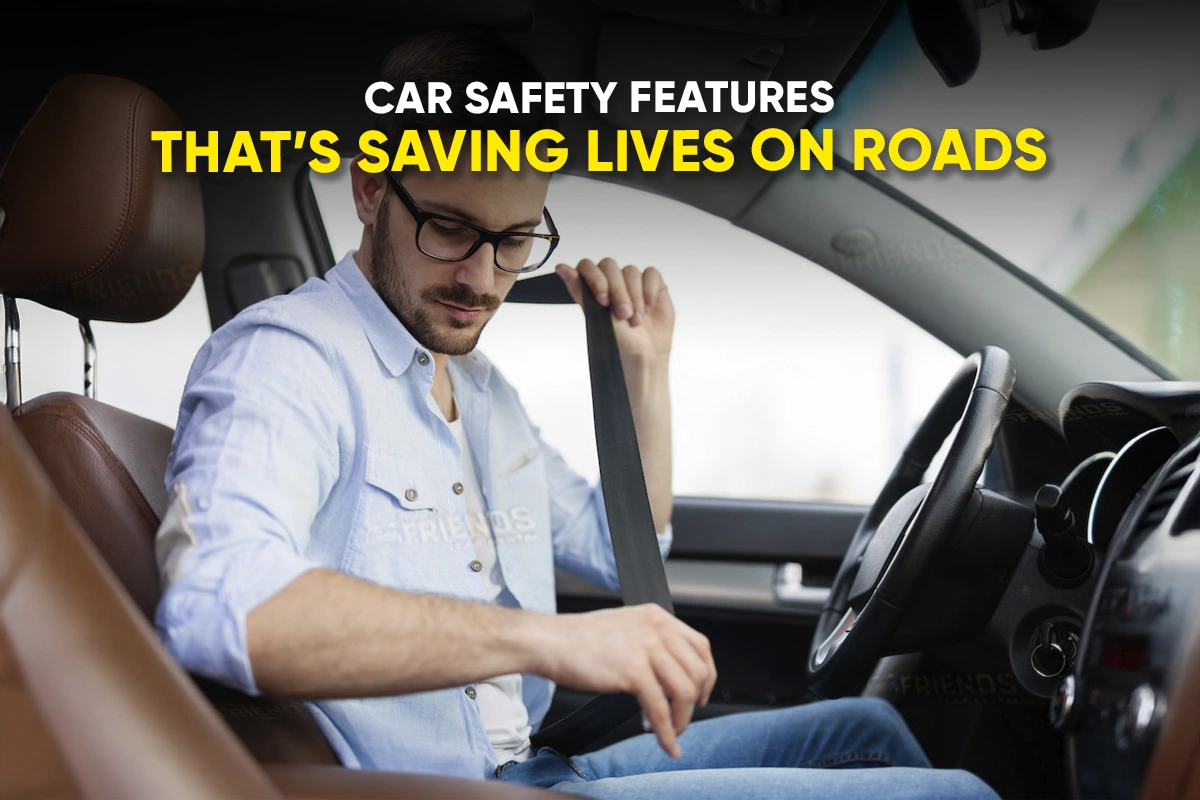
What are the most important car safety features that can save lives on roads? This comprehensive guide explores 25 crucial safety features — active & passive — explaining their working mechanisms, how they prevent accidents, and save your life during unfortunate circumstances.
Modern-day vehicles come equipped with several enhanced safety features — most standard & some optional — all engineered to improve the driving experience while ensuring optimal safety. From airbags and child-safety seats to ABS and automatic high beams, learn what each of the latest safety features offers for your safety. Let’s dive in:
Passive Safety Features
1. Airbags
Airbags are a critical safety feature that provide a protective cushion for occupants in the event of a collision. Working in conjunction with a car's seat belts, airbags rapidly inflate upon impact. They prevent a driver or passenger from striking the vehicle's interior surfaces, like the steering wheel, dashboard, or windshield.
Airbag Working Mechanism
The deployment of an airbag is a precisely timed, split-second process driven by advanced sensor technology.
Impact Sensors: A network of crash sensors, located in various parts of the vehicle (e.g., front, sides, and rear), detects a sudden, severe deceleration consistent with a crash.
Electronic Control Unit (ECU): The sensors send data to the ECU, which is the brain of the airbag system. The ECU analyzes the data to determine the severity and type of crash. If the collision meets the deployment criteria, the ECU sends a signal to the airbag inflator.
Inflator and Cushion: This signal ignites a small chemical charge, which rapidly produces a harmless gas (usually nitrogen or argon) that inflates the airbag cushion. The entire process—from impact detection to full inflation—occurs in less than a second. It’s faster than the blink of an eye.
Rapid Deflation: Immediately after deployment and impact with the occupant, the airbag begins to deflate through small vents. This rapid deflation is essential for absorbing the occupant's momentum and preventing them from being injured by the cushion itself.
How Airbags Save Lives
Airbags are responsible for saving countless lives and preventing serious injuries by:
Absorbing Impact Energy: Airbags provide a cushioned surface that absorbs the force of a person's forward momentum. They significantly reduce the severity of head, chest, and facial injuries.
Preventing Ejection: They help keep occupants secured within the vehicle's safety cage. This is critical in preventing partial or full ejection from the vehicle.
Working with Seat Belts: Airbags are a supplemental restraint system. They are designed to work in tandem with a properly worn seat belt, holding the occupant in place for the airbag to be most effective.
2. Seat Belts
Seat belts are foundational safety elements that secure occupants against harmful movement, which may occur during a collision. A seat belt is the most effective safety feature in a vehicle, serving as the primary restraint system. Modern seat belts are typically three-point belts. They feature a lap belt and a shoulder belt to distribute the force of impact across the body's strongest points.
Seat Belt Working Mechanism
Seat belts are engineered with a sophisticated, three-stage system to provide optimal protection:
Retractor and Locking: The retractor allows the belt to move freely with the occupant's movements but instantly locks in place upon sensing a sudden stop, collision, or hard braking. This prevents the occupant from being thrown forward.
Pre-tensioners: Upon impact, a pyrotechnic charge instantly tightens the belt in milliseconds, eliminating any slack — firmly pulling the occupant back.
Load Limiters: After the pre-tensioner tightens the belt, the load limiter system releases a small amount of webbing. This control reduces the extreme force placed on the chest and shoulders, minimizing the risk of injury.
How Seat Belts Save Lives
A fastened seat belt is proven to save lives by:
Preventing Ejection: It keeps occupants inside the vehicle during a crash. This is crucial as the risk of death is dramatically higher for those who are ejected.
Absorbing Crash Energy: The belt's material and engineering are designed to stretch and absorb the immense kinetic energy of a collision. It immensely reduces the force transferred to the body.
Spreading Force Evenly: It distributes the impact forces across the body's most resilient areas, such as the hips and chest. These areas can withstand greater stress than the head and neck.
Proper Positioning: It holds the occupant in the correct position for other safety systems, such as airbags, to function effectively. Seat belts maximize their protective capabilities.
3. Crumple Zones
Crumple zones are designated areas of a car's structure designed to deform and collapse in a controlled manner during a collision. They are strategically located at the front and rear of the vehicle, serving as a sacrificial barrier to absorb and dissipate the immense energy of an impact before it can reach the passenger cabin.
Crumple Zones Working Mechanism
The effectiveness of crumple zones lies in the principles of physics. They slow down the change in a vehicle's speed and protect its occupants.
Energy Absorption: The zones are built with specific materials and structural elements that bend, crush, and deform predictably upon impact. This process converts the crash's kinetic energy into heat and sound energies, rather than transferring it directly to the passengers.
Time Extension: By collapsing gradually, a crumple zone extends the duration of the impact. This slight increase in time drastically reduces the peak force exerted on the occupants.
The Safety Cage: The crumple zones work with the rigid passenger cell — the safety cage, which is designed not to deform. These zones protect this rigid shell, maintaining a survival space for the occupants.
How Crumple Zones Save Lives
Crumple zones have a profound impact on vehicle safety by:
Reducing Impact Force: Crumple zones are the first line of defense. They absorb the majority of the collision's energy and shield the occupants from the full force.
Preventing Intrusion: They prevent vehicle components like the engine from intruding into the survival space.
Minimizing Injury: The controlled deceleration reduces the severity of injuries by lowering the forces on a person's body. They also allow other safety features, like seat belts and airbags, to function effectively.
4. Reinforced Safety Cage
The reinforced safety cage, AKA passenger cell, is the extremely rigid core of a car’s body structure. It’s made from high-strength steel and other advanced materials. Its primary purpose is to create a survival space for occupants during a collision. While crumple zones are designed to absorb crash energy, the safety cage is engineered to resist deformation. It acts as a protective fortress around the passengers.
Reinforced Safety Cage Working Mechanism
The safety cage's function is centered on channeling and deflecting crash forces away from the occupants. It works in direct partnership with a car's crumple zones to provide a two-stage protection system.
Rigid Construction: The safety cage is constructed with reinforced pillars, roof rails, and floor pans, forming a single, incredibly strong shell. This structure remains intact even under significant forces.
Force Channeling: When a collision occurs, the crumple zones at the front and back absorb the initial energy. Any remaining energy is then directed along predefined paths within the safety cage's frame. It channels the force around the occupant cabin and minimizes the impact on the passengers.
Preventing Intrusion: The rigid structure of the safety cage also prevents external objects from intruding into the passenger compartment.
Reinforced Safety Cage Saves Lives
The reinforced safety cage is fundamental to a vehicle's passive safety. Its life-saving benefits include:
Preserving Occupant Space: It maintains a secure, uncrushed space for occupants, which is critical for their survival in a high-impact crash.
Protecting Against Roof Collapse: The reinforced roof and pillars prevent the roof from collapsing in a rollover accident. It safeguards the occupants' heads and torsos.
Synergy with Other Systems: The safety cage provides a stable foundation for seat belts and airbags to function correctly to protect occupants as intended.
5. Side-Impact Beams
Side-impact beams are robust steel bars strategically placed within a vehicle’s doors. They protect occupants in a side-on collision — often referred to as a T-bone crash.
Side-Impact Beams Working Mechanism
Side-impact beams function by creating a rigid barrier that absorbs and redirects collision forces away from the occupant.
Reinforced Structure: The beams are typically made from high-strength steel and are integrated into the interior structure of the door.
Force Distribution: In a side collision, the beam acts as a brace. It distributes the impact force across the entire door structure and into the vehicle's frame. This prevents the force from being concentrated on the small area where the impact occurred.
Preventing Intrusion: The beam's primary job is to resist inward movement of the door panel during impact. This significantly prevents the hit surface from crushing the occupant, maintaining a safe survival space.
How Side-Impact Beams Save Lives
Side beams have a profound impact on safety by:
Protecting Against Direct Impact: They absorb the initial shock of a side collision — one of the most dangerous types of crashes.
Minimizing Crushing Injuries: They prevent the door from caving in on the occupant, greatly reducing severe chest, torso, and pelvic injuries.
Creating a Survival Space: They preserve a safe space for the occupant, allowing airbags and seat belts to work effectively.
6. Energy-Absorbing Steering Column
The energy-absorbing steering column is a crucial feature designed to compress or collapse during a severe frontal collision. Its main purpose is to prevent the steering wheel from being pushed into the driver's chest and head. This system is a vital part of a car's overall crash protection strategy. It works in conjunction with airbags and seat belts.
Energy-Absorbing Steering Column Working Mechanism
Unlike a rigid steering column, this system is a two-piece shaft with a unique design, allowing it to compress in a controlled manner upon impact.
Controlled Collapse: The column is not a solid rod. It is made up of collapsible sections that are held together by plastic pins, mesh, or other components that can break and deform under a set amount of force.
Energy Dissipation: In a frontal crash, the driver's forward momentum is absorbed as the steering column shortens. This action dissipates kinetic energy that would have been transferred to the driver’s body.
Combined Protection: The collapsible steering column works in perfect synchrony with the frontal airbag. As the column moves forward, it provides space for the airbag to fully inflate and cushion the driver.
Energy-Absorbing Steering Column Saves Lives
This Energy-Absorbing Steering Column has dramatically improved driver safety by:
Reducing Chest and Head Injuries: It significantly reduces the risk of serious injuries to the chest and head by preventing the steering wheel from forcefully entering the driver's space.
Minimizing Impact Forces: It absorbs a substantial portion of the impact energy. Effectively slows down the driver's body in a safer, more controlled way.
Creating a Safer Environment: The collapsing column and airbags help to create a safer landing zone for the driver's body during a crash.
7. Shatter-Resistant Glass
Shatter-resistant glass, AKA laminated glass, is a type of safety glass. It’s made by sandwiching a layer of polyvinyl butyral (PVB) between two or more layers of glass. It offers a higher degree of protection in a crash — unlike tempered glass. Laminated glass is designed to stay together.
Laminated Glass Working Mechanism
The shatter-resistant properties of this glass are based on its layered construction.
Layered Design: The core of the glass is the PVB interlayer. This strong, flexible plastic layer binds the glass panels, making them shatter-resistant.
Holding Power: In a collision, the glass may crack and break, but the PVB interlayer holds the pieces in place. This prevents the glass from shattering into sharp shards that can injure occupants.
Preventing Ejection: By remaining in one piece, the windshield or window also acts as a barrier. It prevents occupants from being ejected from the vehicle during a severe crash.
How Laminated Glass Saves Lives
This advanced safety glass plays a critical role in crash protection by:
Protecting Occupants: It prevents sharp glass from flying into the cabin, which dramatically reduces the risk of lacerations and other injuries.
Preventing Ejection: It keeps occupants safely inside the vehicle's reinforced passenger cell during an accident.
Maintaining Structural Integrity: It maintains the integrity of the vehicle's frame to provide a stable surface for the frontal airbags to deploy.
8. Child Safety Seat Anchors (LATCH)
Child Safety Seat Anchors, AKA the LATCH system, is a standardized safety feature built into most modern vehicles. This system provides dedicated attachment points that simplify the installation of a child car seat. LATCH is a critical tool for ensuring the safety of a vehicle’s most vulnerable occupants.
LATCH Working Mechanism
The LATCH system is an intuitive design that provides a secure, rigid connection between the car seat and the vehicle's frame.
Lower Anchors: These are two small, U-shaped bars in the seat bight, used to connect the car seat's lower attachments.
Top Tether: An additional anchor point is located behind the vehicle's back seat. It is used to connect the car seat's top tether strap. It prevents the car seat from pitching forward in a crash.
Secure Connection: Together, the lower anchors and the top tether create a secure, fixed point for the car seat.
How LATCH Saves Lives
The LATCH system has a direct and significant impact on a child’s safety by:
Reducing Incorrect Installation: LATCH simplifies the car seat installation process. It drastically reduces the high rate of improper installations commonly associated with using seat belts.
Minimizing Movement: The rigid connection to the vehicle's frame reduces the amount of forward or side-to-side movement.
Enhancing Protection: A properly installed car seat provides the best possible protection for a child's head, neck, and spine.
Active Safety Features
9. Anti-lock Braking System (ABS)
The ABS is a foundational safety feature that prevents a vehicle's wheels from locking up during hard braking. It allows the driver to maintain steering control and maneuver around an obstacle. ABS is critical in an emergency situation.
ABS Working Mechanism
ABS operates by rapidly monitoring and adjusting the brake pressure at each wheel. The process involves several key components:
Wheel Speed Sensors: A sensor on each wheel constantly measures its rotation speed.
ECU: The Electronic Control Unit receives the data from the sensors and detects if a wheel is about to lock up.
Hydraulic Modulators: If a wheel is about to lock, the ECU signals the modulators to rapidly release and then reapply brake pressure. It repeats this cycle many times per second.
This rapid pulsing action ensures the tires maintain a grip on the road, allowing the driver to steer the vehicle while braking.
How ABS Saves Lives
ABS has proven to significantly reduce accidents by:
Enabling Steering Control: By preventing skidding, it allows drivers to steer clear of obstacles, pedestrians, or other vehicles during a sudden stop.
Shortening Stopping Distance: It can reduce the stopping distance on slippery surfaces like wet pavement, gravel, or snow.
Preventing Tire Skids: The system prevents the loss of vehicle control that occurs when a car skids.
10. Electronic Stability Control (ESC)
The ESC — an active safety system — automatically helps drivers maintain control of their vehicle during extreme steering maneuvers. It prevents a car from skidding or losing control in situations like a sudden swerve to avoid an obstacle or driving on slippery roads. When ESC detects a loss of traction, it takes split-second action, helping the driver stay on their intended path.
ECS Working Mechanism
ESC uses a sophisticated network of sensors and onboard computers to monitor vehicle behavior.
Sensor Monitoring: Sensors measure steering angle, wheel speed, and lateral acceleration to determine if the vehicle is behaving as the driver intends.
Oversteer/Understeer Correction: If the system detects oversteer or understeer, it takes immediate corrective action.
Automated Intervention: The system automatically applies the brakes to an individual wheel and/or reduces engine power. This helps the driver regain control and stabilize the vehicle.
How ECS Saves Lives
ESC is one of the most important safety innovations in modern vehicles, as it:
Prevents Skidding: It actively helps prevent a loss of vehicle control — a primary cause of single-vehicle crashes and rollovers.
Enhances Stability: It improves vehicle handling in difficult conditions, such as wet roads, gravel, or ice.
Reduces Rollover Risk: By keeping the vehicle on its intended path, it significantly lowers the risk of a catastrophic rollover accident.
11. Traction Control System (TCS)
The TCS is a core safety feature that prevents a vehicle’s wheels from spinning excessively during acceleration. It is especially vital when accelerating on low-traction surfaces like snow, ice, or wet pavement. TCS ensures the wheels maintain a strong grip on the road, enabling the car to move forward efficiently and safely.
TCS Working Mechanism
TCS works in close coordination with the Anti-lock Braking System (ABS) and uses many of the same components.
Wheel Slip Detection: The system constantly monitors the rotational speed of the drive wheels using wheel speed sensors. If a wheel begins to spin faster than the others during acceleration, the system recognizes a loss of traction.
Corrective Action: To restore grip, the TCS automatically intervenes by either reducing engine power or applying a small amount of brake pressure to the individual wheel that is spinning.
Restoring Traction: This controlled intervention slows the spinning wheel down. It allows the wheel to regain traction and move the vehicle forward without slipping or swerving.
How TCS Saves Lives
TCS is crucial for everyday safety, and its benefits include:
Preventing Wheel Spin: It ensures that a car can accelerate effectively on slippery surfaces without losing control.
Improving Vehicle Stability: It helps maintain stability when accelerating around a corner or on uneven surfaces.
Enhanced Acceleration: It provides a smoother and more controlled acceleration — a key factor in avoiding accidents, particularly in urban driving.
12. Emergency Brake Assist (EBA)
Emergency Brake Assist (EBA) is a safety system that recognizes when a driver is attempting an emergency stop. It automatically applies the vehicle's full braking power, even if the driver hasn't fully pressed the brake pedal. This system is crucial because in panic situations, drivers may not apply enough pressure to the brake pedal quickly enough to achieve maximum braking force.
EBA Working Mechanism
Brake Assist uses sophisticated sensors and algorithms to detect the urgency of a braking situation.
Rapid Pedal Movement: Sensors monitor the speed and force with which the driver presses the brake pedal. A very rapid and forceful application suggests an emergency.
Increased Brake Pressure: If the system determines it's an emergency braking situation, it instantly amplifies the braking force, engaging the ABS.
Maximizing Stopping Power: By ensuring maximum braking pressure is applied quickly, EBA helps to shorten the vehicle's stopping distance in critical situations.
How EBA Saves Lives
Brake Assist significantly enhances safety by:
Reducing Stopping Distance in Emergencies: It ensures the vehicle achieves its shortest possible stopping distance when a quick stop is needed.
Compensating for Driver Hesitation: It overcomes the natural tendency of some drivers to not brake hard enough or quickly enough in a panic.
Maximizing the Effectiveness of ABS: By applying full pressure rapidly, it allows the ABS to work optimally, maintaining steering control during the hard stop.
13. Forward Collision Warning (FCW)
FCW is a safety system designed to alert the driver when the vehicle is approaching another vehicle or an obstacle in its path. It provides crucial early warnings, giving the driver more time to react and mitigate a crash.
FCW Working Mechanism
FCW systems typically utilize a combination of sensors to monitor the road ahead.
Radar Sensors: Emit radio waves that bounce off objects and measure the distance and speed of vehicles ahead.
LiDAR Sensors: Use laser beams to create a precise 3D map of the environment in front of the vehicle.
Cameras: High-resolution cameras analyze visual data to identify vehicles, pedestrians, and other obstacles.
Multi-Sensor Fusion: The system's computer processes data from these various sensors to assess the risk of a collision.
Audible and Visual Alerts: If a potential collision is detected, the system provides the driver with visual warnings and audible alerts. Some systems may also provide haptic warnings on the steering wheel.
How FCW Saves Lives
FCW is a proactive safety feature that helps prevent accidents by:
Providing Early Warning: It gives drivers crucial extra seconds to react to potentially dangerous situations.
Reducing Rear-End Collisions: FCW alerts drivers about slowing or stopped vehicles ahead, helping prevent a common accident.
Improving Driver Awareness: It keeps drivers more informed about the traffic conditions directly in front of them.
14. Autonomous Emergency Braking (AEB)
The AEB — a sophisticated active safety system builds upon FCW. If the system detects an imminent collision and determines that the driver has not reacted sufficiently or in time, AEB will automatically apply the vehicle's brakes to avoid or mitigate the severity of the impact. AEB acts as a final safety net when a collision is unavoidable by driver action alone.
EAB Working Mechanism
AEB systems utilize the same types of sensors as FCW (radar, LiDAR, and cameras) but with the added capability of actively controlling the vehicle's braking system.
Risk Assessment: The system continuously analyzes the speed, distance, and trajectory of objects ahead to assess the likelihood of a collision.
Driver Intervention Monitoring: EAB monitors the driver's actions (braking, steering). It determines if they are taking sufficient action to avoid the detected threat.
Automatic Braking: If a collision is imminent and the driver's response is insufficient, the AEB will automatically engage the brakes. The system is designed to apply the necessary level of braking force, up to full emergency braking.
How EAB Saves Lives
AEB is considered a highly effective safety technology with the potential to save numerous lives and reduce injuries by:
Preventing Collisions: By automatically braking, it can avoid accidents entirely in some situations.
Reducing Impact Speed: When a collision is unavoidable, AEB significantly reduces the vehicle's speed at the point of impact, thereby minimizing the severity of injuries to both the vehicle occupants and any pedestrians or other vehicles involved.
Acting as a Backup: It provides a critical layer of safety in situations where the driver may be distracted, fatigued, or unable to react quickly enough.
15. Pedestrian and Cyclist Detection
Pedestrian and Cyclist Detection is an advanced safety feature that uses sensors to identify pedestrians, cyclists, and other vulnerable road users in the vehicle's path. It is often an integral part of a car's forward collision warning and automatic emergency braking systems, but it is specifically programmed to recognize the unique shapes and movements of people and bicycles.
Pedestrian and Cyclist Detection Working Mechanism
This system relies on sophisticated data analysis to distinguish pedestrians and cyclists from other objects.
Sensor Fusion: The system typically uses a forward-facing camera and radar to scan the area ahead of the vehicle. The camera identifies shapes and objects, while the radar measures distance and speed.
Smart Algorithms: Onboard software processes the sensor information to recognize the specific patterns and movements of people and cyclists.
Alert and Intervention: Once a pedestrian or cyclist is identified as a potential collision risk, the system provides an alert to the driver. If the driver does not react, it can automatically engage the brakes to prevent or mitigate an impact.
How Pedestrian and Cyclist Detection Saves Lives
This technology is paramount in urban environments and saves lives by:
Preventing Fatalities: It drastically reduces fatal and serious injuries to pedestrians and cyclists, who are the most vulnerable on the road.
Acting as a Backup: It provides a crucial safety net for drivers who may be distracted, especially in crowded city centers.
Enhancing Driver Awareness: It helps to increase a driver's awareness of their surroundings by providing early warnings.
16. Lane Departure Warning (LDW)
LDW is a safety feature that alerts a driver if a vehicle begins to drift out of its lane unintentionally. The system combats driver inattention or fatigue by ensuring the car stays within its designated lane markings on the road.
LDW Working Mechanism
The LDW uses a simple yet effective system of visual and audible alerts to warn the driver.
Camera-Based Monitoring: A forward-facing camera, usually mounted near the rearview mirror, continuously monitors the lane markings on the road.
Boundary Detection: The system's software recognizes the solid or dashed lines of a lane. If the vehicle's wheels start to cross a line without the turn signal being activated, a warning is triggered.
Types of Alerts: The system will then alert the driver through visual icons on the dashboard, audible beeps, or chimes. Haptic feedback, like a vibration in the steering wheel or seat is also common.
How LDW Saves Lives
LDW is a vital tool for driver safety as it:
Prevents Run-Off-Road Accidents: LDW helps prevent single-vehicle accidents that can occur when a driver falls asleep or becomes distracted.
Reduces Head-On Collisions: By keeping the car in its lane, it lowers the risk of a head-on collision with oncoming traffic.
Combats Driver Fatigue: The system serves as a constant reminder to an inattentive or drowsy driver to focus on the road.
17. Lane-Keeping Assist (LKA)
The LKA — an advanced form of LDW goes beyond simply alerting the driver. If the system detects that the vehicle is unintentionally leaving its lane, it actively intervenes. It provides a gentle steering input to guide the vehicle back to the center of the lane.
LKA Working Mechanism
LKA uses the same camera and sensor systems as LDW but adds a connection to the vehicle's steering system.
Continuous Monitoring: The forward-facing camera continuously tracks the vehicle's position relative to the lane markings.
Active Steering Correction: If the vehicle starts to drift without a turn signal, the system sends a signal to the electric power steering system. This signal commands a subtle turn of the steering wheel, nudging the car back into the lane.
Driver Override: The system is designed to be subtle and can always be overridden by the driver's manual steering input.
How LKA Saves Lives
The LKA provides an extra layer of automated safety that significantly benefits drivers by:
Preventing Unintentional Drifting: It helps to actively prevent accidents caused by a driver drifting out of their lane.
Reducing Driver Fatigue: It provides a form of automated assistance that can reduce the mental effort required for long-distance driving.
Enhancing Safety in High-Speed Driving: It is particularly useful on highways, where unintentional lane changes at high speeds can be catastrophic.
18. Adaptive Cruise Control (ACC)
ACC is an evolution of traditional cruise control that automatically adjusts a vehicle’s speed to maintain a safe speed. It can automatically slow down in response to traffic and speed up when the path ahead is clear. This reduces the need for constant driver input on long trips.
ACC Working Mechanism
ACC systems are a prime example of active safety and driver convenience working together.
Forward-Facing Sensors: ACC system uses a forward-facing radar sensor, a camera, or a combination of both to detect the vehicle ahead and measure its speed and distance.
Automatic Speed Adjustment: The onboard computer processes this data in real-time. If the vehicle ahead slows down, the ACC automatically reduces speed to match the speed and maintain safe following distance.
Driver Override: The system can be manually overridden by the driver at any time by pressing the accelerator or brake pedal.
How ACC Saves Lives
ACC is an invaluable tool for modern driving that enhances safety by:
Reducing Rear-End Collisions: It helps to maintain a consistent and safe following distance, a key factor in preventing rear-end collisions.
Lowering Driver Fatigue: On highways and in stop-and-go traffic, it reduces the driver’s constant need to adjust speed, helping prevent fatigue-related accidents.
Proactive Braking: Some systems can warn the driver and even apply the brakes to avoid an impending collision with a vehicle ahead.
19. Blind Spot Monitoring (BSM)
BSM acts as a second set of eyes to detect vehicles that are not visible in the rearview or side mirrors. By alerting the driver to the presence of these hidden vehicles, BSM significantly reduces the risk of sideswipe collisions.
BSM Working Mechanism
BSM systems typically use radar or cameras to scan the blind spots on both sides of the vehicle.
Sensor-Based Detection: Sensors located on the rear bumper or side mirrors continuously monitor the adjacent lanes.
Visual and Audible Alerts: When a vehicle enters the blind spot, the system triggers a warning. This is most commonly a light in the side mirror; however it can also be an audible chime or a vibration in the steering wheel.
Integrated with Turn Signals: The system is often integrated with the turn signal. If the driver activates their turn signal while a vehicle is in the blind spot, the warning will become more prominent, providing a more urgent alert.
How BSM Saves Lives
BSM enhances driving safety by:
Preventing Sideswipe Collisions: It prevents accidents that occur when a driver attempts to change lanes without seeing a vehicle next to them.
Increasing Driver Confidence: It provides an extra layer of confidence and awareness for drivers, particularly on multi-lane highways or in heavy traffic.
Reducing Risk for Vulnerable Users: It is also very effective at detecting smaller vehicles, motorcycles, and bicycles that can be easily missed.
20. Rear Cross-Traffic Alert (RCTA)
The RCTA warns drivers of vehicles approaching from the side when they are backing out of a parking space or driveway. This system is vital for preventing accidents in crowded parking lots and other areas where visibility may be limited.
RCTA Working Mechanism
RCTA works by monitoring the area behind the vehicle with the same radar sensors used for Blind Spot Monitoring.
Rear-Facing Radar: The rear radar sensors scan a wide, 180-degree area to the left and right as the car is backing up.
Approaching Vehicle Detection: The system is specifically programmed to detect the speed and trajectory of approaching vehicles.
Audible and Visual Alerts: If an approaching vehicle is detected, the system provides both an audible alert and a visual warning on the infotainment screen or side mirrors.
How RCTA Saves Lives
RCTA is a crucial feature that provides safety by:
Preventing Back-Up Accidents: It prevents crashes that occur in parking lots, which are a very common source of minor and major collisions.
Overcoming Visibility Limitations: It warns the driver of approaching traffic that may be hidden by large vehicles, columns, or other obstructions.
Enhancing Situational Awareness: It provides a critical alert when the driver's attention is focused on backing up and their view may be restricted.
21. Rearview Camera
A rearview camera, AKA a backup camera provides a clear, wide-angle view of the area directly behind the vehicle. This technology is now standard on most new cars. It is vital for eliminating blind spots that can hide small children, pets, or other obstacles when backing up.
Rearview Camera Working Mechanism
The rearview camera system is simple and intuitive, activating automatically to assist the driver.
Automatic Activation: When the driver shifts the vehicle into reverse, the camera's live feed is automatically displayed on the dashboard's infotainment screen.
Wide-Angle View: The camera provides a wide, unobstructed view of the area behind the vehicle.
Dynamic Guidelines: Most modern systems feature dynamic guidelines that are superimposed over the video feed. These lines show the vehicle's projected path and help the driver gauge distances to obstacles and parking space boundaries.
How Rearview Cameras Save Lives
Rearview cameras have had a significant impact on safety by:
Preventing Back-Over Accidents: They are specifically designed to prevent tragic accidents that occur when a driver fails to see behind the vehicle.
Enhancing Awareness: These cameras provide the driver with a level of situational awareness that is impossible to achieve with mirrors alone. They are crucial, especially in crowded areas like parking lots or driveways.
Making Parking Safer: They make parking in tight spaces and backing out of driveways much safer, preventing collisions with other vehicles.
22. Tire Pressure Monitoring System (TPMS)
A TPMS is an electronic safety feature that uses sensors to continuously monitor the air pressure inside each tire. The system alerts the driver via a dashboard indicator light if the pressure in any tire drops to an unsafe level. It is crucial in preventing a sudden tire failure, which can lead to a loss of vehicle control.
TPMS Working Mechanism
Two primary types of TPMS monitor tire pressure through different mechanisms.
Direct TPMS: This system uses a dedicated pressure sensor mounted inside each tire. These sensors transmit real-time data to a central computer, providing highly accurate pressure readings for each tire.
Indirect TPMS: This system does not use dedicated sensors in the tires. Instead, it utilizes the existing wheel speed sensors of ABS. If a tire's pressure is low, its diameter shrinks slightly, causing it to spin faster than the other tires. The system detects this rotational difference and alerts the driver.
How TPMS Saves Lives
TPMS plays a critical role in preventing accidents by:
Preventing Tire Blowouts: Maintaining proper tire pressure prevents sudden tire failures. It protects from a catastrophic loss of vehicle control at high speeds.
Improving Handling: Properly inflated tires ensure the car handles as it was designed to, providing optimal stability, braking, and steering response.
Reducing Risk: With an early warning of underinflation, the system gives the driver time to safely address the issue. It avoids dangerous situations.
23. Adaptive Headlights
Adaptive headlights are an advanced lighting system that automatically adjusts the direction and intensity of a vehicle's headlights. They improve visibility and safety at night by illuminating the road ahead, especially when navigating turns and hills.
Adaptive Highlights Working Mechanism
This system is a smart, automated form of active lighting that works with the vehicle’s other systems.
Sensor Fusion: The headlights are connected to sensors that monitor steering wheel angle, vehicle speed, and the incline of the road.
Motorized Adjustment: Based on the sensor data, small electric motors within the headlight assembly swivel the light beams left or right in the direction the driver is steering. This allows the driver to see around a corner as they turn. Drivers don’t have to wait until the car is facing that direction.
Beam Intensity: Some advanced systems can also adjust the intensity of the light to avoid dazzling oncoming drivers.
How Adaptive Lights Save Lives
Adaptive headlights enhance nighttime driving safety by:
Increasing Visibility: They help to illuminate potential hazards—such as pedestrians, animals, or debris—that would otherwise remain hidden in the dark around a bend.
Reducing Driver Strain: By providing a better view of the road ahead, they reduce the stress and eye strain associated with nighttime driving.
Preventing Collisions: The improved visibility reduces the risk of a driver overshooting a turn or colliding with an obstacle they couldn’t see.
24. Driver Monitoring Systems
Driver Monitoring Systems are advanced safety technologies that detect signs of driver fatigue, inattention, or distraction. The goal of these systems is to alert the driver before a dangerous situation occurs. They provide a critical layer of protection against accidents caused by human error.
Driver Monitoring System Working Mechanism
These systems utilize a variety of sensors to analyze a driver's behavior.
Camera-Based Monitoring: An infrared camera, often mounted on the steering column or dashboard, tracks the driver's eye movements, blinking patterns, and head position. If the system detects a lack of focus on the road, consistent with drowsiness, it will trigger an alert.
Steering and Lane-Based Analysis: The system can also use data from other sensors, such as steering input and lane position. Erratic steering, frequent lane departures, or a lack of steering input over a period of time can indicate that the driver is drowsy or distracted.
Audible and Visual Alerts: The system will typically provide audible chimes, visual warnings on the dashboard, or haptic feedback to prompt the driver to take a break or pay attention.
How Driver Monitoring Systems Save Lives
Driver monitoring systems are a powerful tool for preventing accidents by:
Preventing Fatigue-Related Crashes: Alerting a drowsy driver to take a break helps to prevent a major cause of highway accidents.
Combating Distraction: The system provides a real-time warning when a driver's attention is diverted from the road, such as when they look at their phone.
Promoting Safe Habits: The alerts encourage drivers to be more aware of their own state of mind.
25. Automatic High Beams
Automatic High Beams is a convenient active safety feature that uses a camera to automatically switch a vehicle's headlights between high and low beams. The system provides a driver with the maximum amount of road illumination at night without the risk of dazzling oncoming traffic or drivers ahead.
Automatic High Beams Working Mechanism
The system operates based on real-time visual information from the road ahead.
Camera-Based Detection: A forward-facing camera, typically mounted on the windshield, continuously monitors the road ahead for light sources.
Intelligent Switching: The system's software is programmed to recognize the headlights of oncoming cars and the taillights of cars ahead. When an approaching vehicle is detected, the system automatically switches the headlights from high to low beams.
Seamless Function: Once the oncoming vehicle has passed or the car ahead is no longer a factor. The system automatically switches the high beams back on to restore full illumination.
How Automatic High Beams Save Lives
Automatic High Beams are a valuable safety tool that:
Improves Visibility: They ensure the driver always has the best possible view of the road ahead, which is particularly on dark, unlit roads.
Reduces Dazzle: They prevent the driver from accidentally blinding oncoming drivers. Prevent temporary vision impairment and potential accidents at night.
Enhances Driver Focus: They remove the need for a driver to manually operate the high beam switch. Drivers can remain focused on steering and other road conditions.
Final Thoughts
Understanding the safety features of your vehicle is the first step toward becoming a more informed and safer driver. While the technology in modern cars is incredibly advanced, these features are designed to assist you, not replace your judgment. Your awareness, focus, and adherence to traffic laws remain the most critical factors in preventing accidents and saving lives.
Regularly inspecting your vehicle and ensuring all safety features are functioning correctly is crucial. From ensuring your tire pressure is optimal to replacing a faulty airbag sensor, these small actions can have a significant impact when it matters most. By combining responsible driving habits with the innovative technology in your car, you can ensure a safer journey for yourself, your passengers, and everyone else on the road.
Written by: FriendsCarRental
Published at: Thu, Sep 4, 2025 11:02 AM
Leave a Reply
Your email address will not be published. Required fields are marked *
Car Rental in Dubai
AED 2500
DAY
AED 0
MONTH
-
 SUV
SUV -
 4 Doors
4 Doors -
 5 Seats
5 Seats
- 1 Day Rental Available
- Deposit: Not Required
- Insurance Included
AED 1700
DAY
AED 36000
MONTH
-
 SUV
SUV -
 4 Doors
4 Doors -
 5 Seats
5 Seats
- 1 Day Rental Available
- Deposit: Not Required
- Insurance Included
AED 1200
DAY
AED 0
MONTH
-
 SUV
SUV -
 4 Doors
4 Doors -
 5 Seats
5 Seats
- 1 Day Rental Available
- Deposit: Not Required
- Insurance Included
AED 1600
DAY
AED 35000
MONTH
-
 SUV
SUV -
 4 Doors
4 Doors -
 5 Seats
5 Seats
- 1 Day Rental Available
- Deposit: Not Required
- Insurance Included
AED 1500
DAY
AED 28500
MONTH
-
 SUV
SUV -
 4 Doors
4 Doors -
 5 Seats
5 Seats
- 1 Day Rental Available
- Deposit: Not Required
- Insurance Included

 عربي
عربي
 English
English
 Français
Français
 Русский
Русский
 中国人
中国人
 Nederlands
Nederlands
 Española
Española
 Türkçe
Türkçe
 Italiana
Italiana









